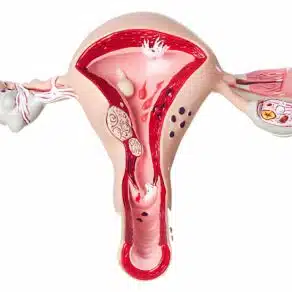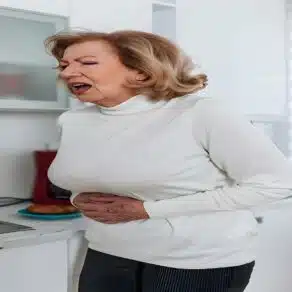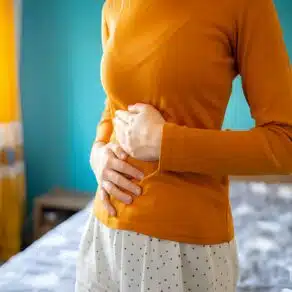Introduction: Endometriosis, a chronic condition characterized by the growth of endometrial-like tissue outside the uterus, commonly manifests with pelvic pain and cramps. In this article, we will explore the intricacies of Menstrual cramps, including their causes, symptoms, and effective management strategies.
1. What Causes Endometriosis Cramps?
- Endometrial Tissue Irritation: The presence of endometrial-like tissue outside the uterus can lead to inflammation and irritation, triggering pain and cramping.
- Hormonal Influence: Fluctuations in estrogen and progesterone levels throughout the menstrual cycle can exacerbate endometriosis symptoms, including cramps.
- Pelvic Adhesions: Endometriosis can cause the formation of scar tissue and adhesions in the pelvic region, leading to pain and discomfort, including cramping sensations.
2. Symptoms of Endometriosis Cramps:
- Pelvic Pain: Additionally, cramping sensations typically occur in the lower abdomen and pelvis, often worsening during menstruation.
- Dysmenorrhea: Severe menstrual pain commonly associated with endometriosis cramps may interfere with daily activities.
- Chronic Pain: Moreover, some women experience chronic pelvic pain and cramping throughout the menstrual cycle, not just during menstruation.
3. Diagnosis:
- Medical History: A detailed medical history, including symptoms related to pelvic pain and menstrual irregularities, is essential for diagnosing Endometriosis .
- Physical Examination: Pelvic examination may reveal tenderness, nodules, or abnormalities suggestive of endometriosis.
- Imaging Studies: Healthcare providers may use ultrasound or magnetic resonance imaging (MRI) to visualize pelvic structures and identify potential endometriotic lesions.
- Laparoscopy: The gold standard for diagnosing endometriosis involves surgical exploration of the pelvic cavity using a laparoscope.
4. Management Strategies:
- Pain Management: Furthermore, over-the-counter pain relievers such as nonsteroidal anti-inflammatory drugs (NSAIDs) can help alleviate pelvic throbbing.
- Hormonal Therapy: Healthcare providers may prescribe birth control pills, hormonal patches, or hormonal intrauterine devices (IUDs) to regulate hormonal fluctuations and reduce endometriosis symptoms, including cramps.
- Surgical Intervention: Healthcare providers may recommend laparoscopic surgery to remove endometrial implants, adhesions, and scar tissue contributing to cramping and pelvic pain.
- Lifestyle Modifications: Regular exercise, stress management techniques, and dietary changes may help reduce inflammation and alleviate endometriosis symptoms, including cramps.
5. Coping Strategies:
- Heat Therapy: Applying heat packs or taking warm baths can provide temporary relief from Pelvic soreness.
- Relaxation Techniques: Practicing deep breathing, meditation, or yoga can help manage stress and relieve muscle tension associated with cramping.
- Support Networks: Connecting with others who have endometriosis or joining support groups can offer valuable emotional support and coping strategies for managing symptoms, including cramps.
Conclusion: Proper diagnosis and management by healthcare providers can effectively control pelvic soreness, improving a woman’s quality of life. Understanding causes, recognizing symptoms, and implementing management strategies can relieve endometriosis symptoms and enhance well-being. Consultation with healthcare providers is crucial for individuals experiencing persistent pelvic pain or menstrual cramping to receive proper evaluation and personalized treatment.




